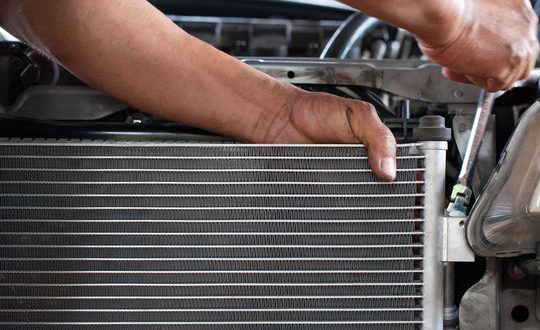Maintaining the engine temperature of your car depends heavily on the radiator. The consequences of its malfunction can vary from minor inconveniences to serious engine damage. You may reduce stress, save money, and save time by spotting radiator problems early. In order to get your car back on the road, this guide delves into the symptoms of radiator issues, troubleshooting advice, and fixes.
Signs of Radiator Failure
Understanding the symptoms of a failing radiator can help you address the issue before it escalates. Here are the most common signs:
- Overheating: An indication of radiator issue is a car that overheats a lot. This can indicate that the radiator is not efficiently releasing heat.
- Coolant Leaks: Coolant puddles beneath your vehicle are frequently a sign of a leak. Usually green, orange, or pink, coolant smells sweet.
- Low Coolant Levels: The radiator may be leaking or have internal obstructions if you are frequently adding coolant.
- Unusual Noises: Hissing, gurgling, or whistling sounds may indicate a broken pressure cap or trapped air in the cooling system.
Troubleshooting Tips
If you suspect radiator problems, follow these steps to diagnose and potentially fix the issue:
Step 1: Check Coolant Levels
- Before opening the radiator cap, make sure the engine is cool.
- To check the level, look inside the radiator or coolant reservoir.
- Refill with the appropriate coolant mix if the levels are low, and keep an eye out for any changes.
Step 2: Inspect for Leaks
- Look for coolant puddles beneath your vehicle.
- Check for obvious damage or cracks in the connections, hoses, and radiator.
- For leaks that are difficult to locate, use a UV dye leak detection kit.
Step 3: Test the Thermostat
- Allow the engine to achieve operating temperature after starting it.
- If the upper radiator pipe feels cool, the thermostat may be stuck closed, which would stop the coolant from flowing.
Step 4: Check for Blockages
- Check for dirt, debris, or twisted fins on the radiator.
- If required, flush the radiator to get rid of interior accumulation.
Potential Solutions
Once you’ve identified the problem, here are some common fixes:
- Refill Coolant: Refilling could temporarily fix a minor coolant loss problem. Use the coolant recommended by the manufacturer at all times.
- Repair Leaks: Radiator sealants are frequently used to fix minor leaks. Larger leaks might require replacement or expert repair.
- Replace faulty components: If necessary, swap out a broken radiator cap, damaged hoses, or a jammed thermostat.
- Radiator Replacement: The best course of action is to replace the radiator if it is seriously corroded or broken. Examine replacement costs and pick a reliable source for high-quality parts.
Don’t let radiator issues prevent you from driving. For premium replacement radiators and parts at affordable costs, visit SpotDem Zuba Parts. Check out our selection and take advantage of prompt, dependable delivery to restore your car’s flawless operation. You can also find a reliable car mechanic to inspect and fix the problem HERE.
Have you encountered radiator problems? Use the comment area below to ask questions or share your story. Let’s learn from each other’s experience!
 Spot Dem Everything About Cars
Spot Dem Everything About Cars



